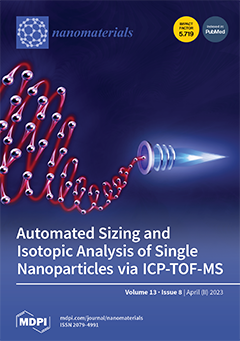Electrochemical energy storage devices are one of the main protagonists in the ongoing technological advances in the energy field, whereby the development of efficient, sustainable, and durable storage systems aroused a great interest in the scientific community. Batteries, electrical double layer capacitors (EDLC),
[...] Read more.
Electrochemical energy storage devices are one of the main protagonists in the ongoing technological advances in the energy field, whereby the development of efficient, sustainable, and durable storage systems aroused a great interest in the scientific community. Batteries, electrical double layer capacitors (EDLC), and pseudocapacitors are characterized in depth in the literature as the most powerful energy storage devices for practical applications. Pseudocapacitors bridge the gap between batteries and EDLCs, thus supplying both high energy and power densities, and transition metal oxide (TMO)-based nanostructures are used for their realization. Among them, WO
3 nanostructures inspired the scientific community, thanks to WO
3’s excellent electrochemical stability, low cost, and abundance in nature. This review analyzes the morphological and electrochemical properties of WO
3 nanostructures and their most used synthesis techniques. Moreover, a brief description of the electrochemical characterization methods of electrodes for energy storage, such as Cyclic Voltammetry (CV), Galvanostatic Charge–Discharge (GCD), and Electrochemical Impedance Spectroscopy (EIS) are reported, to better understand the recent advances in WO
3-based nanostructures, such as pore WO
3 nanostructures, WO
3/carbon nanocomposites, and metal-doped WO
3 nanostructure-based electrodes for pseudocapacitor applications. This analysis is reported in terms of specific capacitance calculated as a function of current density and scan rate. Then we move to the recent progress made for the design and fabrication of WO
3-based symmetric and asymmetric supercapacitors (SSCs and ASCs), thus studying a comparative Ragone plot of the state-of-the-art research.
Full article






